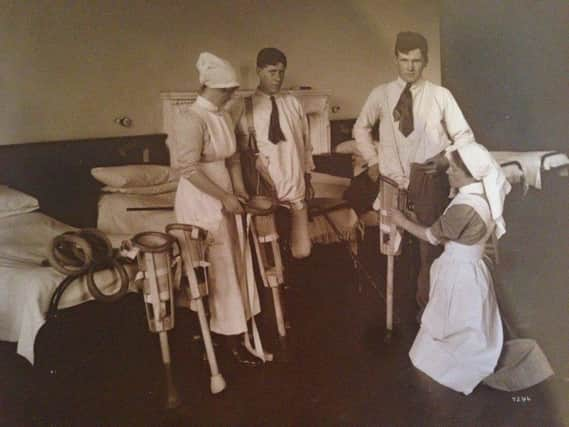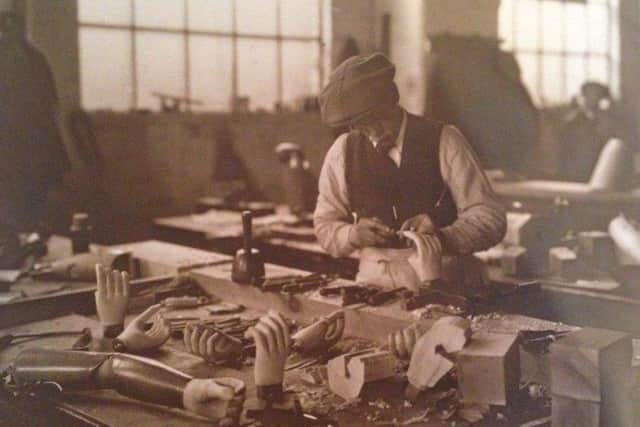Rare wartime military archive found at Erskine Hospital


The archive of historic artefacts and records, described as a “remarkable” insight into how the medical community treated those injured in conflict, was discovered in a disused part of a building at Erskine Hospital.
It includes a wide range of wooden medical appliances for disabled soldiers, as well as woodworking tools used by some of the patients as part of their rehabilitation, and several boxes of documents.
Advertisement
Hide AdAdvertisement
Hide AdThe items were found stored in a back room of the former Princess Louise Scottish Hospital for Sailors and Soldiers, with some even uncovered from beneath the structure’s floorboards.


The fortuitous find comes as the Erskine puts plans in place to celebrate its centenary next year, with the newly discovered archive set to be preserved by the University of Glasgow.
Dr Tony Pollard, senior lecturer in history and battlefield archaeology at the University of Glasgow, said: “What we are unearthing at Erskine is quite remarkable. There are boxes upon boxes of wartime history which will shine a light on so many personal stories of bravery and endurance during the First World War, but also the incredible advancement in the treatment of injured personnel not just physically, but mentally since 1916.
“This archive will not only chart the hospital’s history but also provide an insight into the many medical developments over the last century, methods which helped change care practices towards casualties of war around the globe. I am quite certain once we really start to delve into the vast collection, the findings will be used in research for many years to come.”
The University of Glasgow’s archives services, through funding from the Wellcome Trust, has now teamed up with the veterans’ charity, Erskine, and appointed an archivist and a preservation assistant to catalogue the boxes of material.
Staff at Erskine are also working on a patient database of every soldier admitted and discharged at the hospital during its history, which will be a valuable research resource for families tracing their ancestry.
Erskine chief executive Steve Conway said: “The partnership with the University of Glasgow and funding from The Wellcome Trust will enable us to restore, archive and digitise material which will be accessible to everyone. Hopefully, these records and artefacts will help people research family histories and also support research into the care of veterans with physical or mental injuries sustained in service of their country.”
The hospital’s early prosthetics were regarded as pioneering in their day. They included the so-called Erskine Leg, a prosthetic limb designed by Sir William Macewen, co-founder of the facility.
Advertisement
Hide AdAdvertisement
Hide AdThe archive contains a full collection of wooden shoe-size moulds used in the workshops for the manufacture of prosthetic legs. The team cataloguing the finds is hoping to find an original Erskine Leg and is appealing for the public’s help, given only one example of the limb exists, stored in the British Museum.